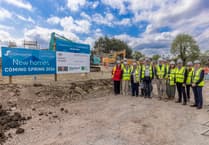At 7.30 a.m. on 1st July 1916, 100,000 men of the first wave left their trenches and ‘went over the top’. They walked slowly over ‘No Man’s Land’ toward the German front lines. It would be the bloodiest day in British military history. 21,000 would die that day and a further 60,000 would be wounded. To put it into more perspective, the British lost more men that day than the combined losses for the entire Crimean, South African Boer and Korean wars.
The build-up to that day had started two weeks earlier with a continuous bombardment of the German Front lines. Such was its ferocity, it could be heard in the south of England 100 miles away.
The British high command were so convinced that nothing could have survived this onslaught that they told the attacking troops to slowly walk across No Man’s Land and occupy the smashed German trenches. In fact, the Germans had constructed deep underground shelters and simply awaited the end of the bombardment, at which time they quickly emerged with their machine guns and mowed down the ‘tommies’ slowly walking towards them. Had the British known and rushed forward, as in previous attacks, they would have undoubtedly won the day.
The 1st Battalion of the Somerset Light Infantry were in the second wave to leave the trenches near Beaumont Hamel and their objective was to gain a foothold in the German strong point called the ‘quadrilateral’. Some did, in fact, make it across the killing ground of No Man’s Land and enter their objective whereupon much hand- to-hand fighting took place, but with bomb and bayonet, the Somersets managed to hold their ground all day until relieved at 10 p.m.
They retired back to their billet in the village of Mailly Maillet and at roll call the
following morning, fourteen officers were reported dead with a further one missing and nine wounded. Of the ‘other ranks’ 151 had been killed with 287 reported as wounded or missing.
Among the 1st Battalion dead that day lay six soldiers with connections to our local area: Stanley William Cass, Radstock and Bath. William George Dix, High Littleton, Jesse Bell Tapp, Stratton-on -the-Fosse, Chilcompton and Downside, George Moon, Stratton-on-the-Fosse and Clandown, Arthur Edward Nicholls, Camerton and Charles Moon, Midsomer Norton.
The 8th Battalion of the Somersets were in positions east of the village of Becourt and they would be in the first wave over the top. Their objectives were the German trenches north of the village of Fricourt and as the barrage lifted, the whistles blew and they left their trenches to be met by a hail of bullets and artillery fire. Taking shelter where they could, they moved forward from shell hole to shell hole, eventually making it to the enemy front lines which they secured.
Over the next four days, small groups of reinforcements arrived and they managed to inch their way further forward consolidating their gains as they went. In the early hours of July 4th, the 12th Middlesex battalion began relieving the weary Somersets who had to run the gauntlet back across No Man’s Land. Over the next day, small parties of stragglers began arriving back at camp, totally exhausted. When the roll call was taken, ten officers were dead, one was missing and seven had been wounded, of the other ranks, 425 were reported as killed, wounded or missing. Such were their losses that they took no further part in the battle. Two local men were among the dead. James Bridges, of Farmborough and James Steven Horler, of Farrington Gurney.
One other man lost that day was John Warr of the 1st Battalion Lancashire Fusiliers, who had family connections in Foxcote, Writhlington and Faulkland.
The Battle of the Somme continued on until November when a halt was called, due to the onset of winter weather. The casualty figures for the Battle are staggering, it is
estimated that the British Army lost 420,000 killed, wounded or missing, add to this the French and German losses and the total rises to around one million men.
If you are interested in finding out more about the fallen soldiers of the Great War on your local War Memorial, their lives are documented in the book entitled In the Company of Heroes by William Blanning and is available from Fosseway Press, Radstock or the Radstock Museum.
B. Blanning

.png?width=209&height=140&crop=209:145,smart&quality=75)

